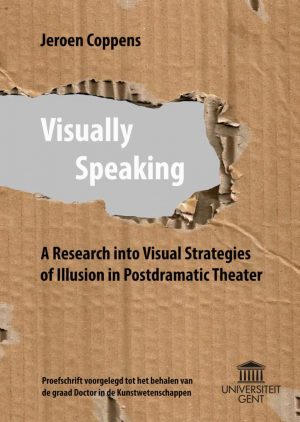Recent evolutions in the theater practice since the turn of the millennium show a clear renewed interest in the trope of visual illusion. This tendency is remarkable, because postdramatic theater is traditionally associated with an inclination away from coherent narrative and illusion. The present research explores this tension, endeavoring to understand the reappearance of visual illusion on the background of a theater tradition that is known for its anti-illusionistic stance. The research analyses how visual illusion is constructed on the theater stage in highly visual dramaturgies that stage complex interactions and transactions between different media. At the same time, the analysis focuses on how these dramaturgies influence contemporary accounts of spectatorship.
This dual approach brings together theater studies and visual studies in order to understand theater as a visual event that unfolds between the spectator, the object of vision and culturally and historically specific ways of seeing that mediate the relationship between both. As a case in point, the analysis scrutinizes the system of linear perspective and the practice of trompe l’oeil as two central visual strategies of illusion that appear on the postdramatic stage. Considering how new media are staged according to the conventions of these strategies, this study aims to uncover how visual illusion in postdramatic theater critically engages with historical scopic regimes while simultaneously exploring new, contemporary ways of looking.
Visually speaking: A research into visual Strategies of Illusion in Postdramatic Theater.
PhD. Dissertation, Ghent University. Faculty of Arts and Philosophy.
Year of publication: 2015
Defended on 8 January 2016
Promotor: Prof. Dr. Katharina Pewny
Co-promotor: Prof. Dr. Christel Stalpaert
Keywords: visual dramaturgy, new media, intermediality, postdramatic theatre, visual studies, W.J.T. Mitchell, metapictures, trompe-l’œil, perspective


